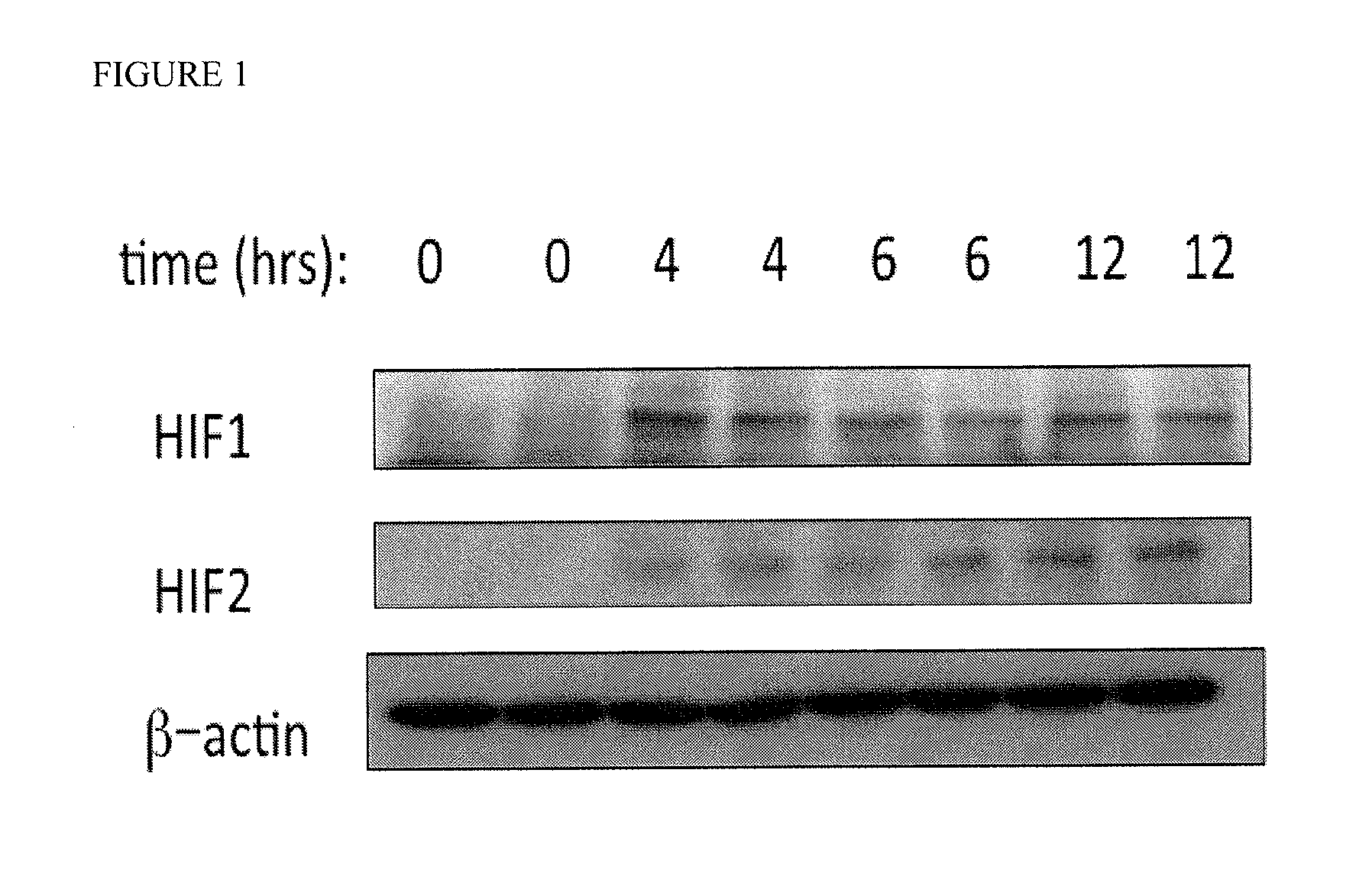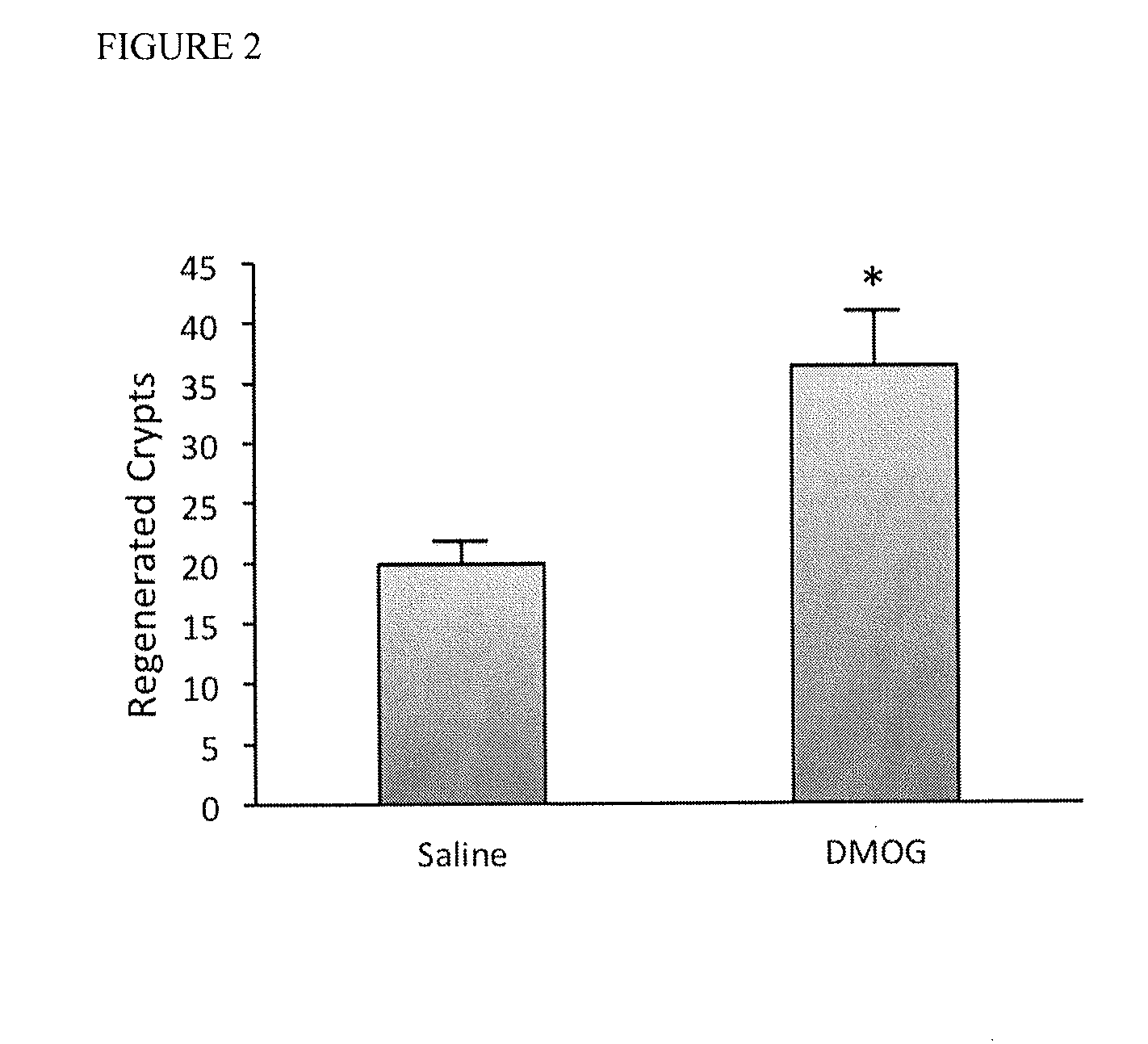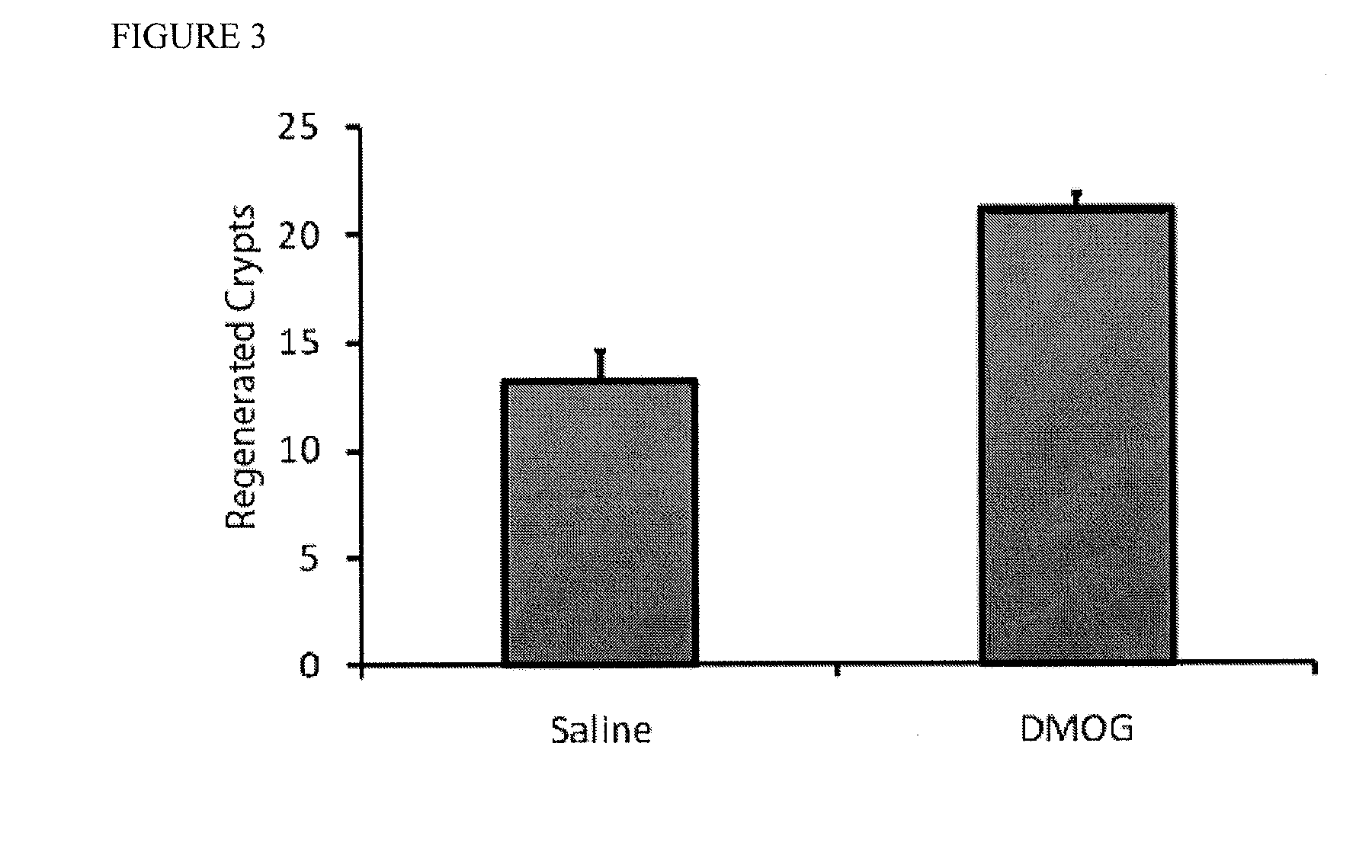Use of prolyl hydroxylase inhibitors as a radioprotective drug for the lower gastrointestinal tract
a radioprotective drug and prolyl hydroxylase technology, which is applied in the direction of biocide, drug composition, anti-noxious agents, etc., can solve the problems of gastrointestinal (gi), most common and distressing, and no effective treatment to prevent gastrointestinal side effects, so as to alleviate esophageal toxicity, relieve gastrointestinal toxicity, and reduce toxicity
- Summary
- Abstract
- Description
- Claims
- Application Information
AI Technical Summary
Benefits of technology
Problems solved by technology
Method used
Image
Examples
example 1
The Effects of DMOG on HIF Protein Levels at Various Timepoints
[0120]In order to assess the kinetic effects of DMOG on the HIF-1 and HIF-2 protein levels, male C57Bl / 6 mice were injected with 8 mg. of DMOG intraperitoneally and colonic crypts were harvested at various time points after injection (FIG. 1). A 8 mg dose results in the elevation of HIF1 and HIF2 proteins 4-12 after DMOG administration as determined by Western blot analysis. There was no observed increase in mortality or GI toxicity at this dose of DMOG observed, nor was there obvious gross morphological changes in the intestine.
example 2
DMOG Protects the Regenerative Capacity of the Colon Following Radiation Injury
[0121]Radio- and chemotoxicity to the GI tract is the result of damage to the intestinal stem cell located within the crypts of Lieberkühn. The intestinal stem cell, defined by its expression of LGR5 is the most rapidly dividing cell in the GI tract and is therefore susceptible to genotoxic damage. In order to assess the effects of DMOG on crypt regeneration after radiation exposure, mice were treated with either saline or 8 mg of DMOG prior to irradiation with a single fraction of 20 Gy to the whole abdomen using a modified TLI jig that shields the upper mouse body. After irradiation, the mice received daily doses of saline or DMOG until they were sacrificed 4.5 days post irradiation. The lower GI tract colon was harvested and subjected to microcolony analysis, which is an in vivo measure of the capacity of intestinal stem cells to regenerate after radiation insult. Remarkably, DMOG treatment exhibited s...
example 3
DMOG Improves Relative Epithelial Function Following Radiation Injury
[0123]Mortality from GI radiotoxicity results from compromised epithelial integrity manifesting as uncontrolled diarrhea or infections from enteric pathogens due to decreased barrier function. To test whether a PHD inhibitor would increase epithelial integrity after radiation insult, a FITC-dextran assay of the GI tract was performed. FITC-dextran cannot cross the GI epithelia, thus its presence in serum is an indication of compromised epithelial integrity. Following irradiation (20 Gy), mice underwent gavage, with the insertion of 0.6 mg / kg of FITC-dextran (4 kD). Four hours later, levels of FITC-dextran were measured in the blood. Treatment with DMOG results in a 3.5-fold decrease in the presence of FITC-dextran in the serum relative to saline control (FIG. 4). There is almost no uptake in mice that did not receive radiation.
PUM
| Property | Measurement | Unit |
|---|---|---|
| concentration | aaaaa | aaaaa |
| oxygen tension | aaaaa | aaaaa |
| chemical analyses | aaaaa | aaaaa |
Abstract
Description
Claims
Application Information
 Login to View More
Login to View More - R&D
- Intellectual Property
- Life Sciences
- Materials
- Tech Scout
- Unparalleled Data Quality
- Higher Quality Content
- 60% Fewer Hallucinations
Browse by: Latest US Patents, China's latest patents, Technical Efficacy Thesaurus, Application Domain, Technology Topic, Popular Technical Reports.
© 2025 PatSnap. All rights reserved.Legal|Privacy policy|Modern Slavery Act Transparency Statement|Sitemap|About US| Contact US: help@patsnap.com



